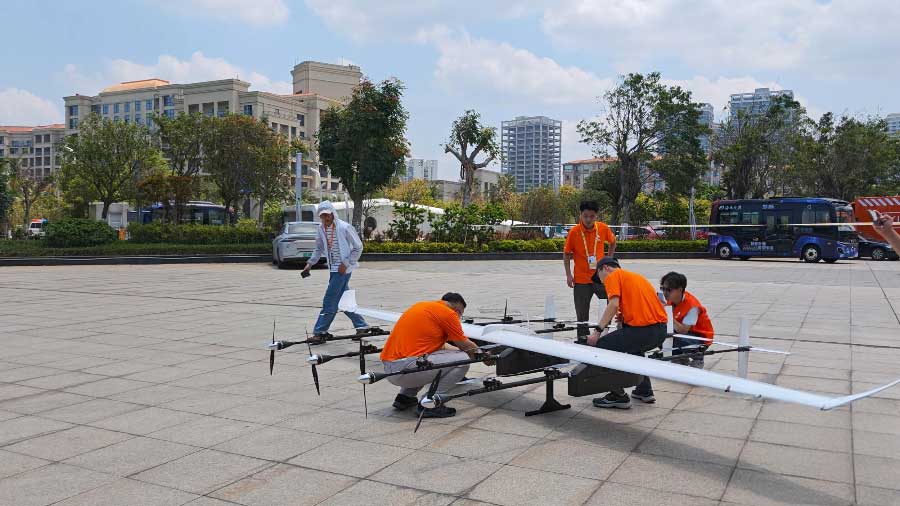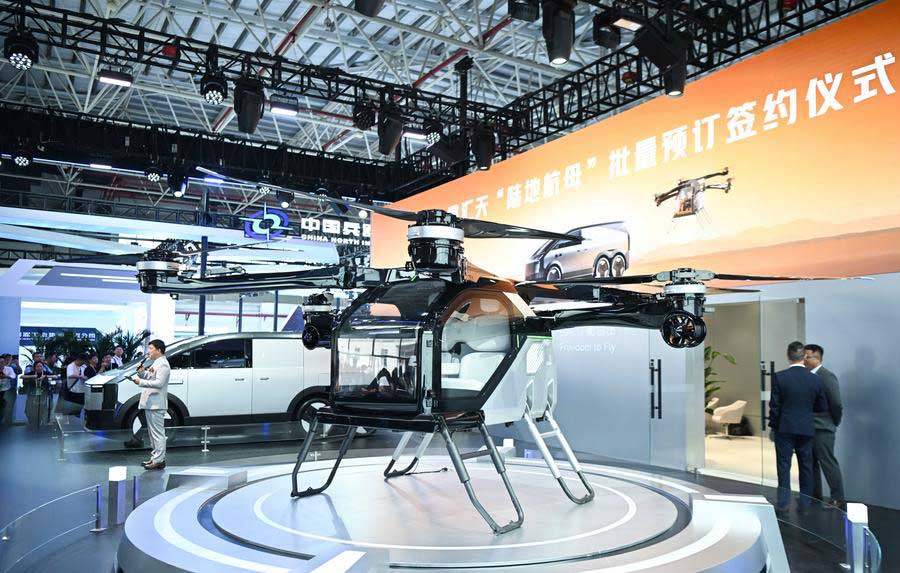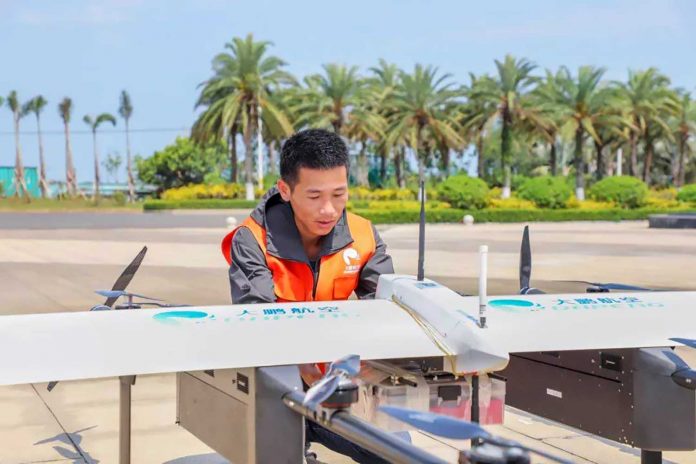On April 11, a cargo drone took off from Haikou’s Jiangdong New District and crossed the Qiongzhou Strait in just 19 minutes, completing a 45-minute delivery run to both the Hainan International Convention and Exhibition Center and Guangdong’s Xuwen Port.

The flight was part of a successful test of what’s being described as China’s first “intra-city + inter-provincial air-to-air intermodal logistics system.”
What is an air-to-air intermodal logistics system?
In this scenario “air-to-air” doesn’t refer to aircraft interacting with each other in flight (like it might in say, a military or aviation context). Instead, it describes a logistics model where both legs of the journey—local (intra-city) and long-distance (inter-provincial)—are handled entirely by air.
So, instead of:
- Land-to-air (goods are trucked to an airport, then flown),
- Sea-to-air (goods are ferried, then flown),
- or air-to-ground (flown and then delivered by road),
this system uses drones or aircraft to carry goods from origin to destination, entirely through the air, connecting one aerial hub to another—hence air-to-air intermodal logistics.
It’s about creating a seamless, aerial-only logistics network from pickup to delivery, without switching to ground or sea transport in between.
The system is being developed by Hainan Dapeng Aviation Technology Co., Ltd. in partnership with logistics firm Hainan Yunyixiang International Supply Chain Management Co., Ltd. It combines short-range urban delivery and longer-range regional transport into one streamlined aerial logistics network.
The test run marks an important step in building faster, more flexible delivery options for regions like Hainan, where sea crossings and limited road infrastructure can slow traditional logistics.
What’s Different About This System?
Unlike existing drone delivery models that focus mostly on last-mile logistics, Hainan’s approach integrates both urban and inter-provincial cargo transport entirely through the air.

The drone used in the trial was a medium-sized VTOL (vertical takeoff and landing) aircraft with a 50 kg payload capacity, a 100 km range, and the ability to operate in high winds. It’s equipped with real-time tracking and data systems for live monitoring of cargo in transit.
By avoiding ground and sea traffic altogether, the system offers significant time savings—up to five hours compared to land-sea combinations. It also reduces the risk of delays due to congestion, weather at sea, or port scheduling.
Hainan’s Investment in Low-Altitude Aviation
As an island province, Hainan faces unique logistics challenges. Delivering goods between urban centres and the mainland often means coordinating road, ferry, and port operations. A drone-based solution avoids many of those pain points.
Hainan’s role as a pilot zone for the Free Trade Port and its investment in low-altitude aviation infrastructure also make it a natural testing ground for this kind of logistics model. Meilan International Airport, which serves as an international cargo hub, adds another layer of integration—linking global air freight with local drone delivery routes.
From Proof of Concept to Scalable Network
The companies involved say they plan to expand the drone network to cover more parts of Hainan and southern China. The goal is to establish reliable cross-strait air corridors and, over time, build a low-altitude logistics network across the province.

The fifth China International Consumer Products Expo features a dedicated low-altitude economy section, with Jiangdong New District showcasing drone technologies and future use cases like cross-sea passenger transport.
A Glimpse at the Low-Altitude Economy
While drone delivery isn’t new, what makes this system notable is its integration of short-haul and inter-regional routes into a single, coordinated platform. It’s an approach tailored to Hainan’s geography and logistics needs, with potential for application in other regions facing similar challenges.
If the model proves scalable, it could help ease supply chain pressure, improve transport efficiency, and offer a lower-emission alternative to traditional logistics—all without needing to build new roads or expand port facilities.
Related article: United Aircraft, a global leader in unmanned systems, makes its debut at the Consumer Expo









